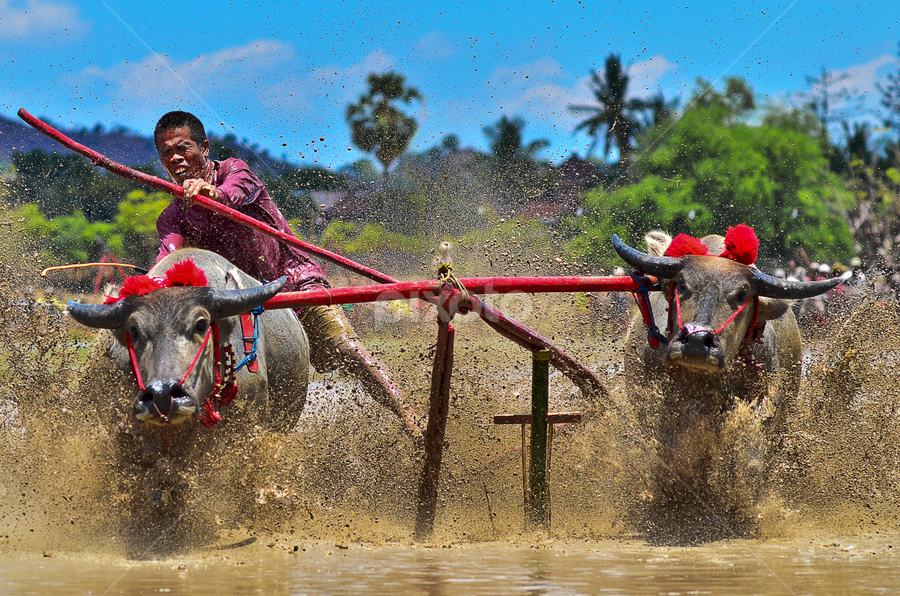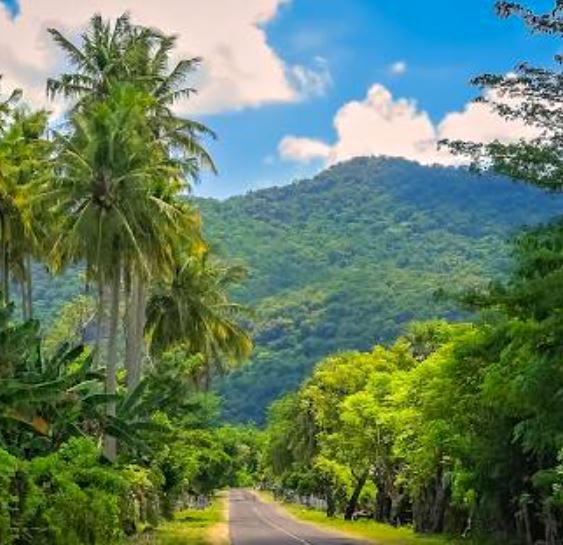
Sumbawa
Sumbawa’s landscapes are a breathtaking mosaic. Trek through verdant rice paddies that stretch like patchwork quilts beneath the sun. Hike to the smoldering summit of Mount Tambora, an active volcano that once reshaped the world. Dive into the coral gardens fringing the island, where Technicolor fish dart through kaleidoscopic reefs.

Some Sumbawa Travel Highlights
- Moyo Island: Explore Moyo Island, a pristine nature reserve featuring waterfalls, lush forests, and a variety of wildlife.
- Kencana Beach: Relax on the beautiful Kencana Beach and soak in the tranquil atmosphere, or try your hand at fishing with locals.
- Traditional Handicrafts: Shop for traditional handwoven textiles, pottery, and wood carvings at local markets and workshops.
- Sumbawa Besar Cultural Tour: Discover the cultural heritage of Sumbawa Besar, the islands largest town, with visits to traditional markets, palaces, and museums.
- Tambora Caldera Exploration: Hike or drive through the Tambora Caldera, which offers stunning views of the calderas interior and historical insights into the 1815 eruption.
- Sumbawa Coffee Tasting: Experience the islands unique coffee culture with tastings of Sumbawa coffee, known for its distinct flavor.
- Bima Traditional Village Visit: Immerse yourself in the culture of the Bimanese people with visits to their traditional villages and witnessing their daily life.
Explore and enjoy the diverse culture, nature and uniqueness of Sumbawa
Tambora Mountain
Moyo Island
Kencana Beach
Lakey Peak Surfing
Topography and Geology
Sumbawa’s topography is a symphony of varied landscapes, featuring everything from dramatic mountains to pristine beaches. The island is part of the Lesser Sunda Islands and is nestled between Lombok to the west and Komodo Island to the east.
The towering Mount Tambora is one of Sumbawa’s most iconic geological features. It gained worldwide notoriety in 1815 when it erupted in the most powerful volcanic explosion in recorded history, launching 100 cubic kilometers of ash into the upper atmosphere, causing 1816, in many parts of the world, to be the ‘year without summer’.
In addition to its volcanic peaks, Sumbawa is endowed with lush forests, savannas, and rolling hills. The island’s soil is fertile, supporting the cultivation of various crops, including rice, corn, coffee, and cacao. The Wawaraba rice terraces are a testament to the island’s agricultural heritage.
Sumbawa’s geology and diverse topography provide the perfect backdrop for exploration, whether trekking through the rugged terrain, venturing into volcanic craters, or relaxing on pristine beaches.
Biodiversity
Despite its relatively small size, Sumbawa is home to a remarkable range of biodiversity. The island’s unique position within the Indonesian archipelago has given rise to distinct flora and fauna.
The terrestrial ecosystems of Sumbawa are inhabited by diverse wildlife, including macaques, deer, and a variety of bird species. The island’s coastal areas and coral reefs are equally rich in marine life, attracting divers and snorkelers eager to explore the underwater wonders.
The Sumbawa Strait, which separates Sumbawa from Komodo Island, is known for strong currents that bring nutrient-rich waters, resulting in an abundance of marine species. Divers can encounter vibrant coral gardens, schools of fish, and the occasional encounter with manta rays and sharks.
The island’s unique biodiversity extends to its flora, including exotic orchids and unique medicinal plants used in traditional herbal remedies.
Human History and Cultures
Sumbawa’s human history is steeped in a blend of indigenous cultures and historical influences. The indigenous people of Sumbawa, such as the Sumbawanese and Bimanese, have a rich cultural heritage.
Traditional music, dance, and art are integral parts of their identity. Islam, introduced through trade and interactions with neighboring islands, has a significant presence on Sumbawa.
The island’s culture is imbued with Islamic traditions, as seen in its architecture, festivals, and daily life. Sumbawa also played a role in Indonesia’s struggle for independence from Dutch colonial rule.
The island was a battleground during the Indonesian National Revolution, and remnants of that era can still be explored today.
The people of Sumbawa are known for their friendliness and hospitality, making it a welcoming destination for travelers interested in immersing themselves in local cultures.
Ask us to design, curate and deliver a first class, unforgettable Indonesian Experience
